Omega Railmaster: always one step ahead
Omega and the Railways
To understand the direct connection between Omega and railways, it’s important to go back well before the emergence and expansion of train travel. In the past, each city used local solar time, meaning noon corresponded to the Sun’s passage through its zenith. But the lack of a standard time caused numerous problems for railway companies: inconsistent schedules across regions, disruptions to arrivals and departures, and, above all, safety risks. To address this, in the late 19th century, companies adopted a standardized time, “railway time,” based on Greenwich Mean Time (GMT).
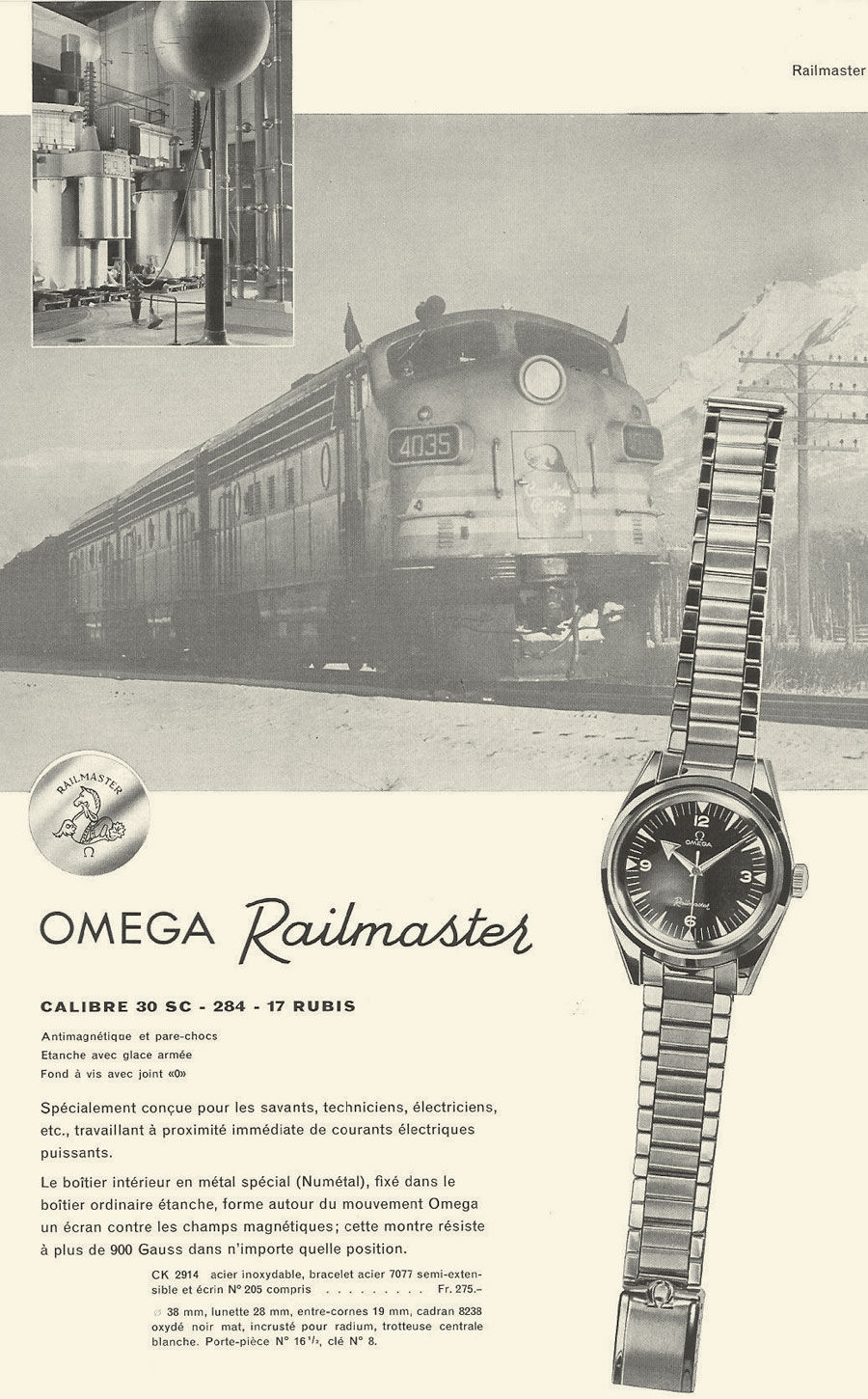
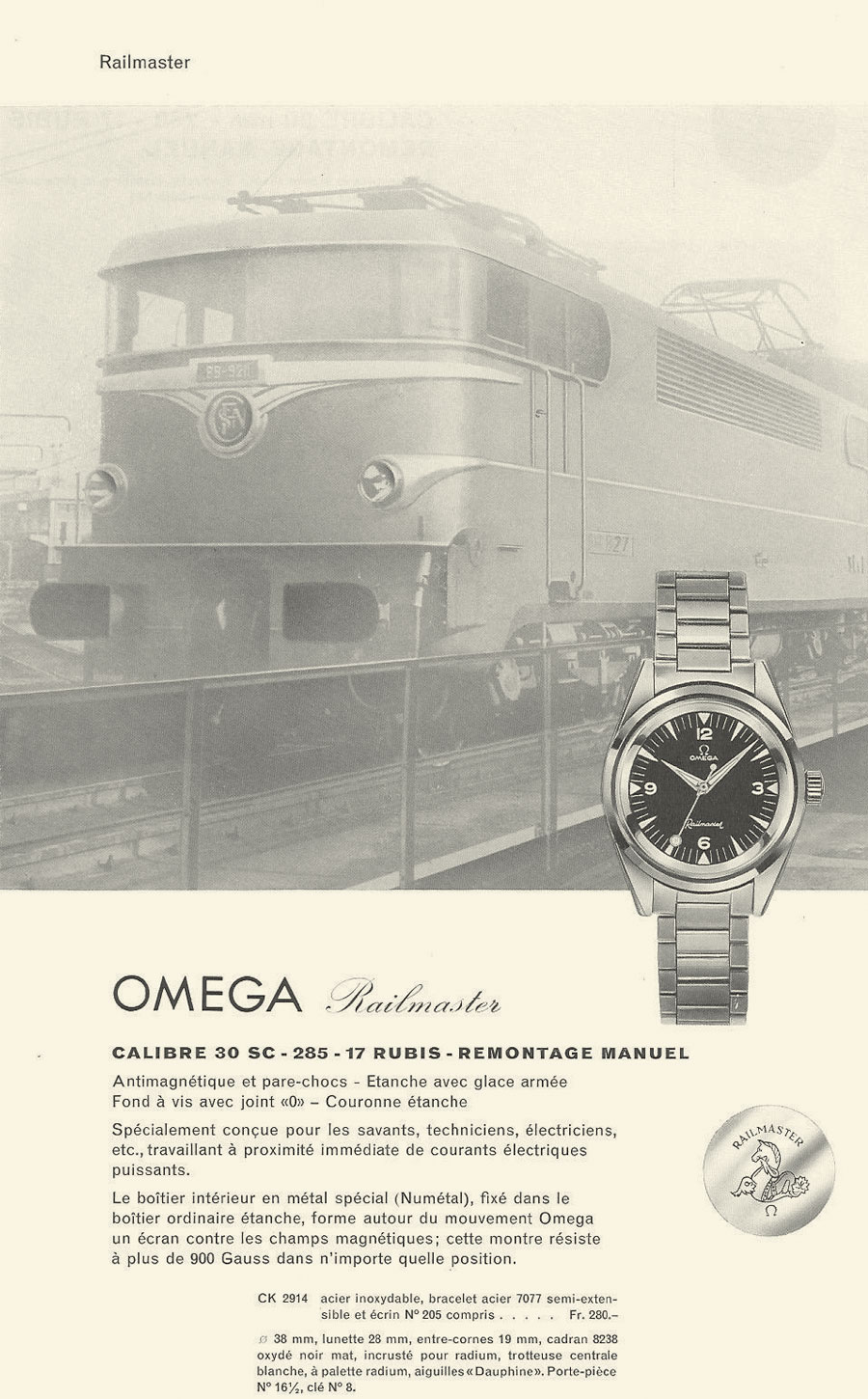
However, reliability remained dependent on the accuracy of railway workers’ watches. A fatal collision in Cleveland in 1891, caused by a watch running ahead, led to the creation of strict standards for official watches. With its experience in the watchmaking world, Omega was the natural brand to meet these precision requirements. As a result, many railway companies around the world provided their employees with various models offered by the manufacturer.
The arrival of the Railmaster watch
It wasn’t until 1957 that Omega designed a wristwatch specifically for railway personnel: the Railmaster. It’s worth noting that at that time, Omega was experiencing a period of technological and scientific excitement, where exploration was at the heart of the concerns of a rapidly changing world. It was in this context that the brand unveiled its trilogy called “Professional Line.”
Designed to support various trades, this initiative enabled the creation of timepieces that have now become iconic: the Speedmaster for racing drivers, the Seamaster 300 for divers and finally the Railmaster.
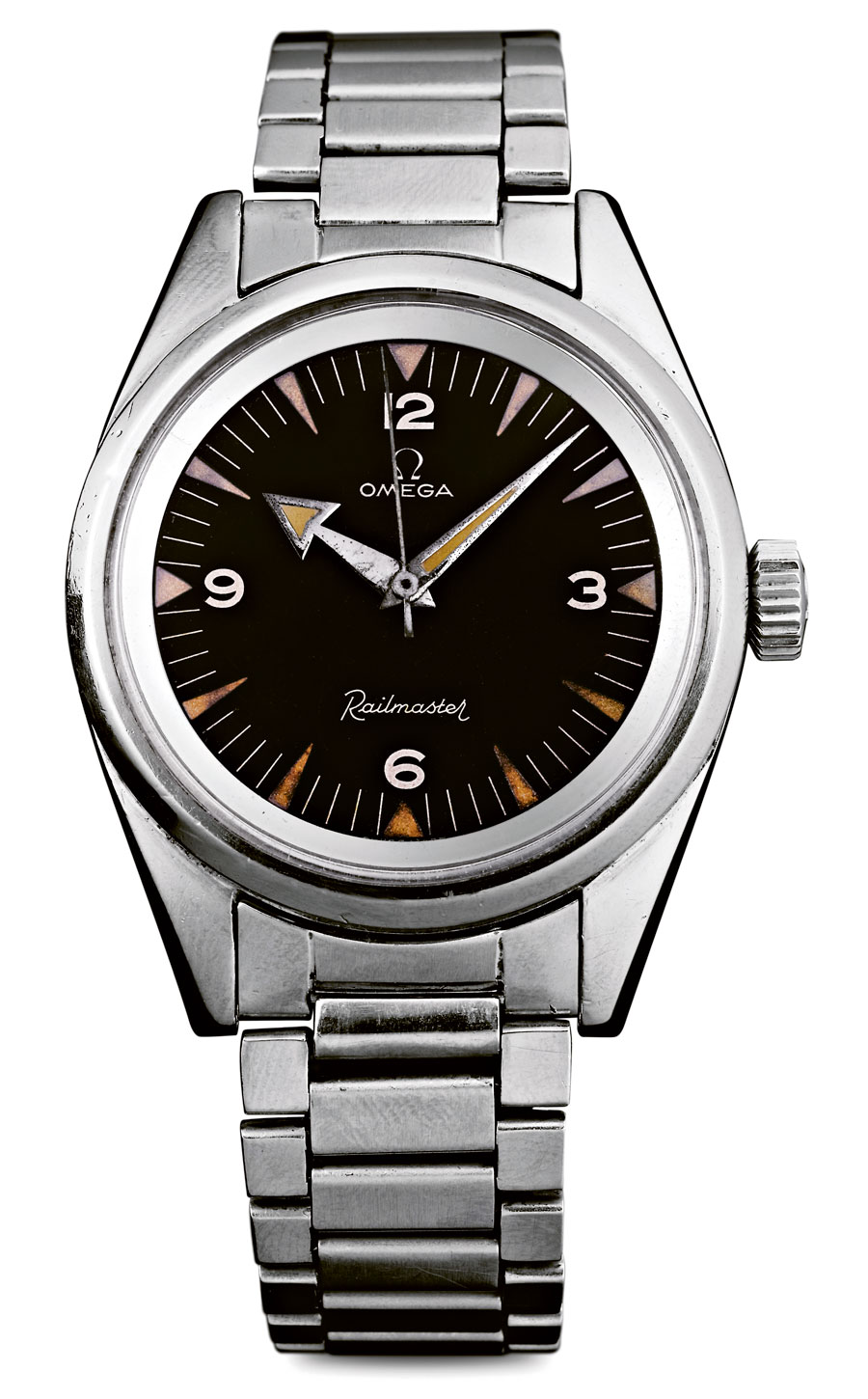
The latter, thanks to its double anti-magnetic case, is suitable for railway workers, technicians, and electricians working in high-voltage areas. Indeed, the watch can withstand magnetic fields of up to 1,000 gauss – whereas period pieces barely reached 60 gauss. A true anti-magnetic innovation in watchmaking.
The Railmasters, new generation
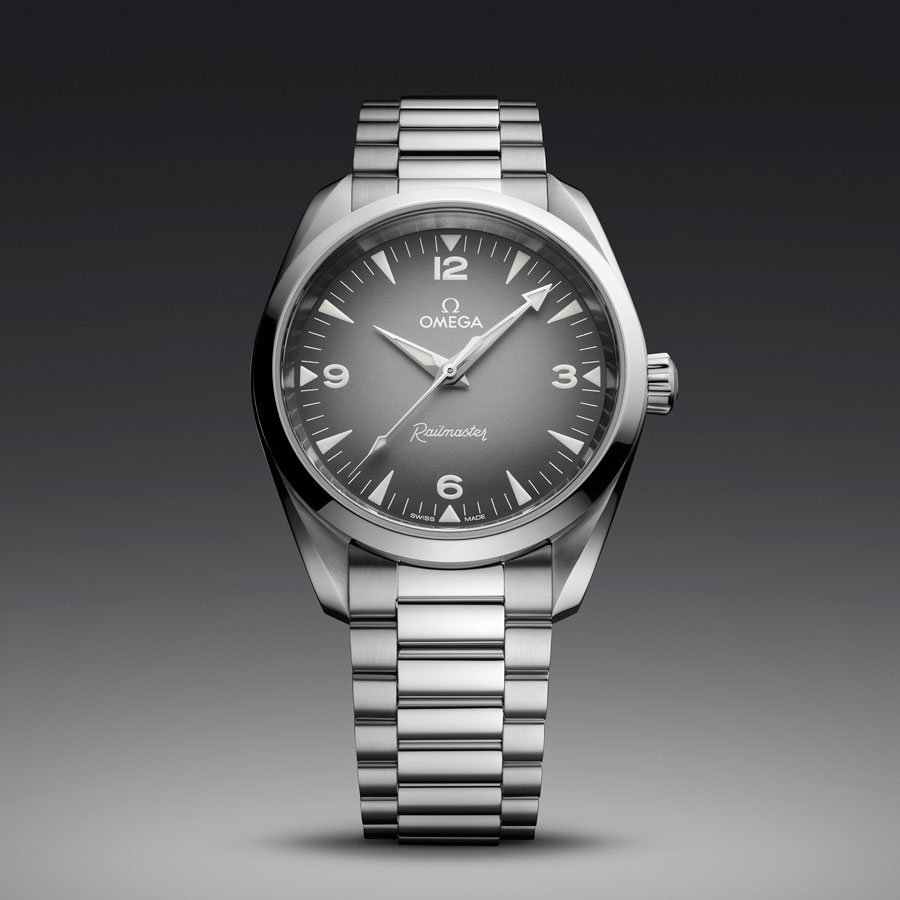
Offered to the general public since 1957, the Railmaster has, since 2003, adopted the design of the Aqua Terra line with its perfectly symmetrical case and its extremely supple link bracelet. Today, four new 38 mm diameter steel variations are entering the collection. The first two, available on a steel bracelet with alternating polished and brushed surfaces or in black leather, have a gray dial with a black gradient towards the outside. Stripped of all superfluous elements, it displays the “Omega” logo at 12 o’clock and the “Railmaster” logo at 6 o’clock. It is also topped with luminescent hands, and punctuated by large indexes and numerals coated with white Super-LumiNova.
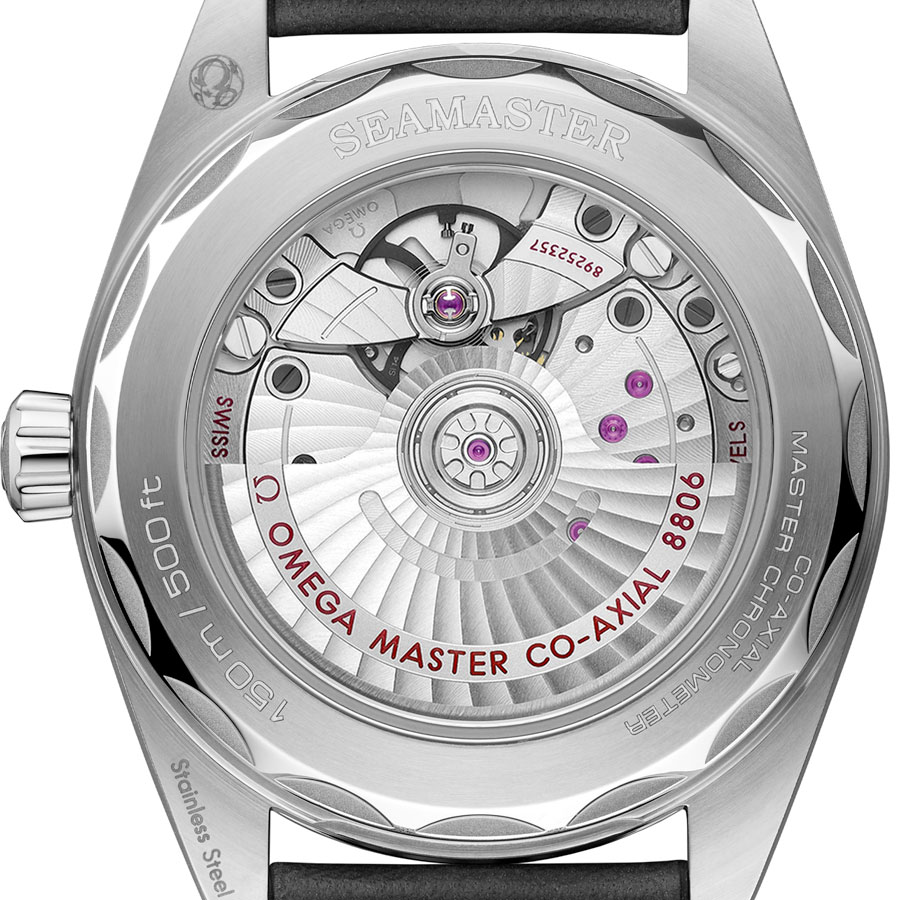
True to Omega’s expertise, these editions are powered by an automatic caliber with Co-Axial escapement, certified as a Master Chronometer by the Swiss Federal Institute of Metrology (METAS). Equipped with a non-magnetic silicon balance spring, this movement is distinguished by its resistance to magnetic fields of up to 15,000 gauss. The power reserve varies depending on the models equipped with the small seconds function – beige dial – which offers 60 hours of power reserve, compared to 55 hours for the gray dial versions. The two editions below, water-resistant to 150 meters, feature a beige dial with a black gradient, embellished with a small seconds at 6 o’clock. This duo accentuates its resolutely retro look with numerals and indexes coated in beige luminescent material, as well as bracelets in steel or golden brown Novonappa leather. We note a slight preference for these last references. And you, which one do you prefer? The predictions are going well…
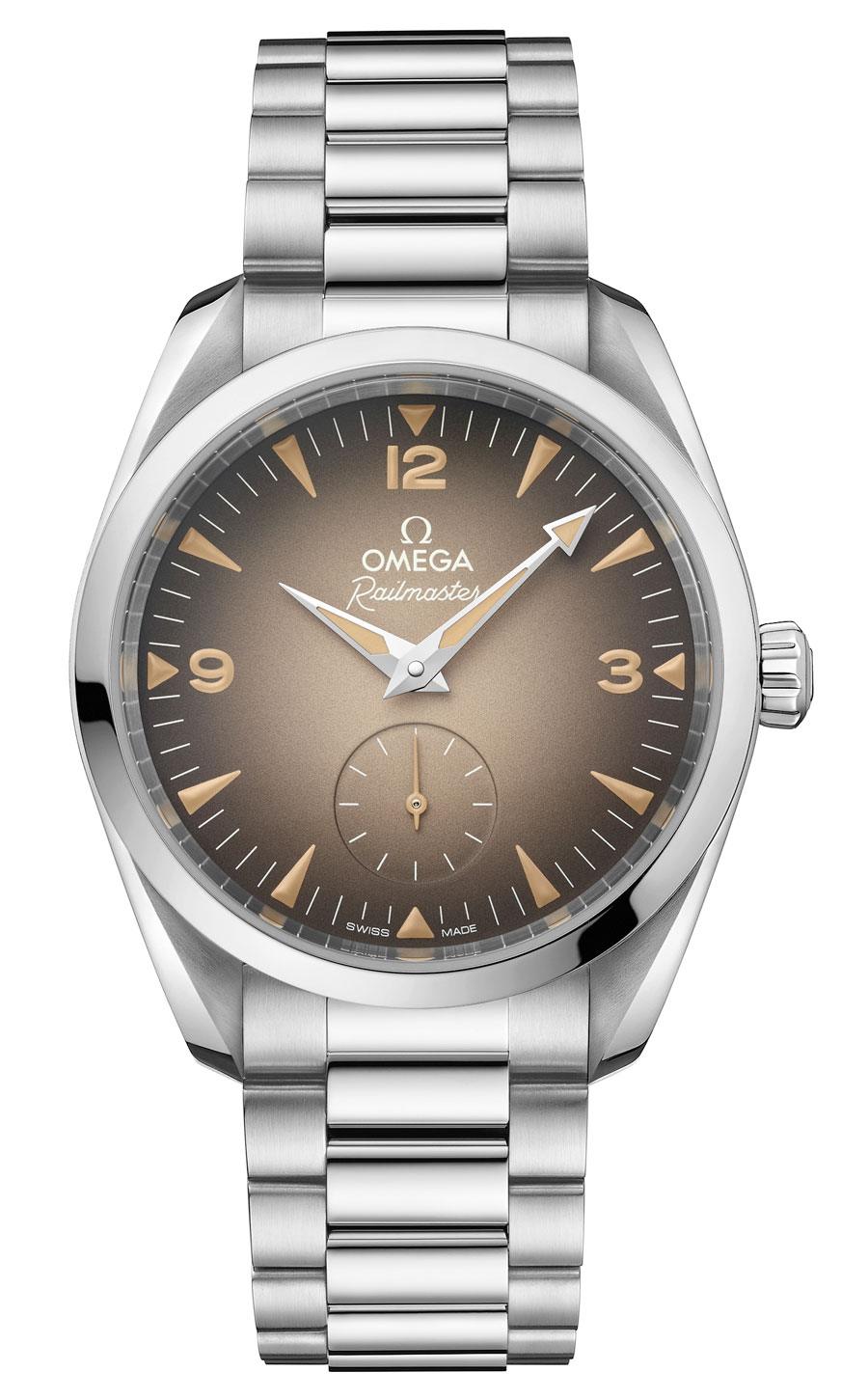
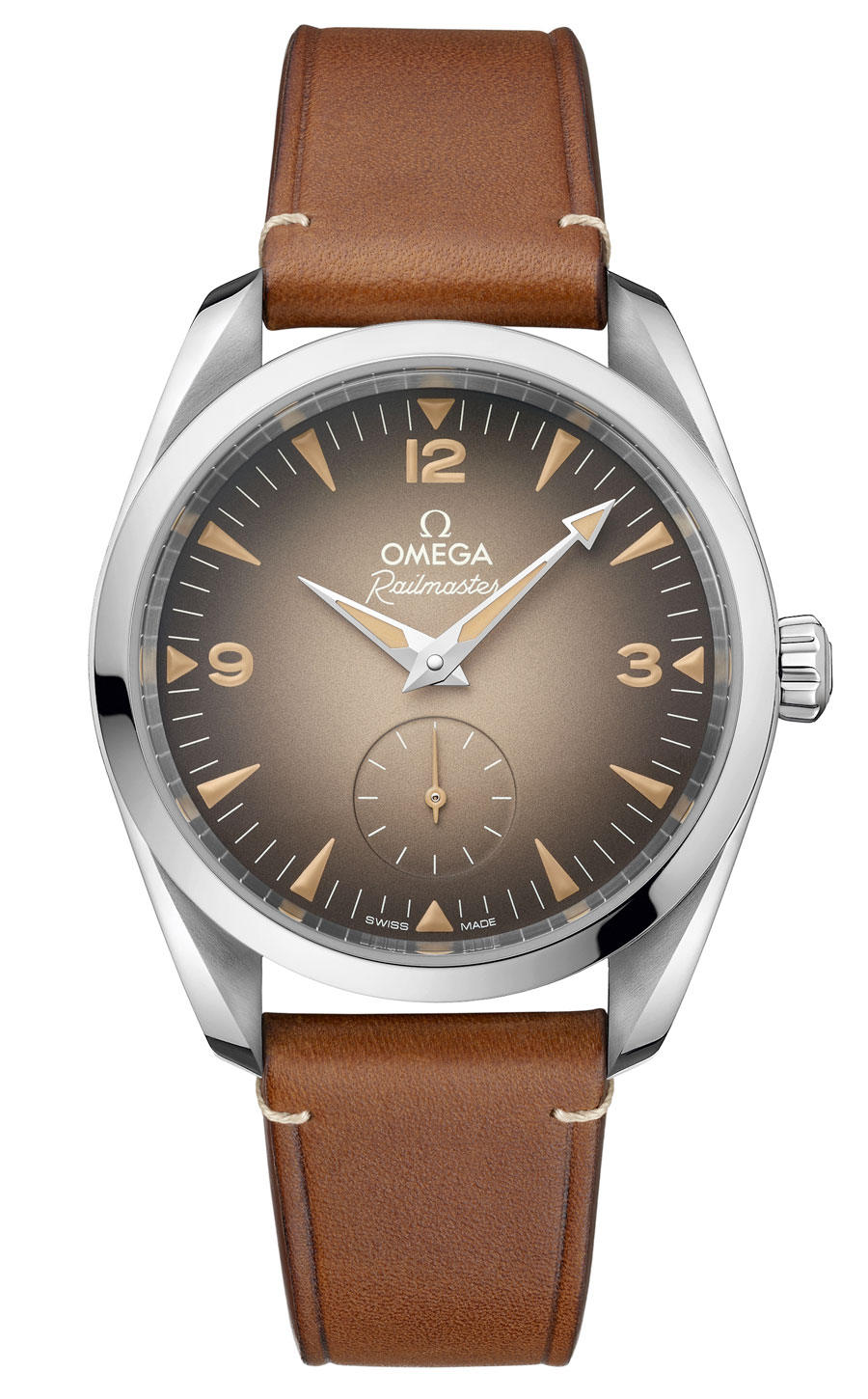
View the Omega Railmaster technical sheets:
Steel – steel bracelet – black dial: €6,000
Steel – black leather strap – black dial: €5,600
Steel – steel bracelet – brown dial: €6,600
Steel – brown leather strap – brown dial: €6,300
See all our articles on Omega.
See also:
Read also: